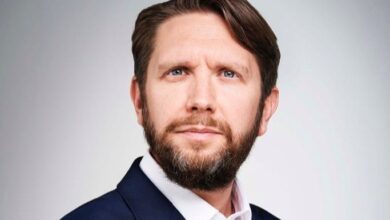Mark Lavery: The Dealership Disruptor Steering Cambria’s “Chapter Two”

Who Is Mark Lavery?
Mark Lavery is the founder, Chairman and Chief Executive Officer of Cambria Automobiles, one of the UK’s most closely watched motor retail groups. With nearly four decades of hands-on automotive retail experience, he is widely regarded as a high-impact operator who blends operational discipline with sharp capital allocation. If you’ve searched for “mark lavery cambria”, you’re looking at the architect of a buy-and-build strategy that scaled from modest beginnings to a nationally recognised group, and then deliberately shifted from public to private ownership to pursue long-term growth on his terms.
Early Career: Foundation Stones for a Builder
Hartwell: From Multi-Site Operations to Group Leadership
Lavery’s formative years were spent at Hartwell, where he rose through the ranks and ultimately served as Group Operations Director. That tenure hardened his reputation as a detail-driven operator who understands the practical realities on a showroom floor every bit as well as the spreadsheet. Running multi-site networks gave him a powerful view of margin, stock turns and people management—the essential building blocks he would later codify at Cambria.
Reg Vardy: A Strategic Pivot to Scale
A move to Reg Vardy followed, this time as an Operations Board Director. The step up brought him closer to large-scale strategy: brand portfolio composition, property footprint, and the delicate balance between central support and dealership autonomy. It also sharpened his instinct for culture—what to standardise across a group and what to leave to talented local leaders.
Founding Cambria Automobiles
The Buy-and-Build Thesis
In 2006, Mark Lavery founded Cambria with a focused thesis: acquire underperforming or under-invested dealerships, improve culture and processes, and recycle capital into the best opportunities. He started with a lean equity base, but a clear rulebook: disciplined pricing on acquisitions, strict focus on return on equity, and relentless operational improvement. The approach was not glamorous; it was consistent. Over time, that consistency became Cambria’s edge.
Culture and Autonomy: Local Heroes, Central Backbone
Lavery’s model emphasised empowered general managers running their sites with ownership mentality, supported by a central backbone for HR, training, marketing and finance. This blend of autonomy and accountability meant decisions could be made close to the customer while still benefitting from group scale.
The AIM Years: Building in Public
Cambria listed on London’s AIM market in 2010. The PLC chapter helped the group access capital, enhance credibility with manufacturers, and accelerate portfolio upgrades—particularly towards premium and luxury marques. Yet Lavery never lost sight of the numbers that matter in retail: stock days, gross-to-net discipline, and the compounding effect of quick turns on used cars.
From PLC to Private: The 2021 Management Buy-Out
Why Go Private?
After a decade as a public company, Lavery concluded that the market did not consistently reflect Cambria’s intrinsic performance or strategic progress. Public markets can be excellent for raising capital, but they can also impose short-term noise on long-term plans. Taking Cambria private in 2021 re-centred the group on multi-year decision-making—brand mix, property investments, digital innovation, and the evolving economics of electrification—without the quarterly spotlight.
What Changed After Delisting?
The post-delisting “Chapter Two” has been defined by speed and focus. Fewer distractions, faster capital deployment, and the freedom to experiment with new retail formats have reinforced Cambria’s operator-led DNA. Lavery’s posture is pragmatic: adapt to the agency model where it works, double down on used-car velocity, and keep a sharp eye on the return on every pound of capital.
Strategy Under Mark Lavery
Premium Brand Pivot and Portfolio Discipline
A hallmark of the “mark lavery cambria” story is portfolio discipline. Over time, Cambria tilted further into premium and luxury franchises—brands where the customer experience, aftersales retention and property standard matter as much as the transaction price. This tilt supported higher gross per unit and a more resilient aftersales base, provided the group continued to execute with discipline.
Used-Car Velocity and Digital Retail
Lavery’s approach to used-car retail is laser-focused on speed. Stock that doesn’t move ties up cash, erodes margin, and distracts teams. Cambria embedded routines—daily pricing reviews, transparent dashboards, and site-level accountability—to keep days-in-stock low. On the digital front, the emphasis is simple: remove friction. From online valuations and reservations to clarity on fees and finance, the aim is to meet customers where they are without losing the personal touch that still closes the deal.
Mark Lavery, Wife and Family
Publicly available information indicates that Mark Lavery keeps his personal life notably private. Reports around the time of Cambria’s take-private transaction referenced his wife, Nicola, particularly in relation to their family’s shareholding. Beyond that, there is little in the public domain—and that appears to be by design. The boundary between the boardroom and home life is respected, and the narrative remains firmly on the business.
Mark Lavery Net Worth: A Sensible, Evidence-Based View
How to Think About the Numbers
Any estimate of “mark lavery net worth” needs to be grounded in valuation logic rather than guesswork. The 2021 management buy-out valued Cambria at approximately the low-to-mid eight-figure range in pounds sterling. Contemporary reports suggested that Mark Lavery and his wife together controlled a significant minority stake at the time. On that basis, the family’s equity value implied by the transaction would have been substantial.
But equity value at deal close is only one part of a net-worth picture. There are adjustments for debt, taxes, personal diversification, subsequent business performance and illiquidity (private shares don’t convert to cash on command). There may also be property holdings, investments and charitable commitments that are not publicly disclosed.
A Conservative Range
Taking the publicly reported transaction valuation and the widely cited family shareholding together, a prudent way to describe “mark lavery net worth” is to say it is likely in the low-to-mid eight figures (GBP) on a look-through basis. That is a broad range by design. It respects the uncertainty around exact personal holdings while acknowledging the obvious: leading, growing and then taking private a sizeable motor retail group has meaningful wealth implications for a principal owner-operator.
Leadership Style and Management Philosophy
People First, Numbers Always
Speak to those who have worked in successful dealerships and a common theme emerges: culture beats strategy without execution. Lavery’s leadership style aims to reconcile both. He backs capable general managers to run their businesses with entrepreneurial latitude, while holding the line on discipline—pricing, stock turns, and cash conversion. In that environment, good people thrive and customers feel the difference.
Capital Discipline and Return on Equity
A persistent thread in the “mark lavery” story is return on equity. Deploy capital only where returns clear a demanding hurdle; if an asset underperforms, fix it or recycle the capital. That philosophy, consistently applied, compounds value over time and allowed Cambria to shift its brand mix, elevate site standards and invest in the systems that support modern retail.
Quick Facts and Timeline
-
Name: Mark Jonathan James Lavery
-
Role: Founder, Chairman & Chief Executive Officer, Cambria Automobiles
-
Experience: Nearly 40 years in UK automotive retail
-
Key Roles Pre-Cambria: Hartwell (Group Operations Director), Reg Vardy (Operations Board Director)
-
Founded Cambria: 2006
-
Listed on AIM: 2010
-
Took Cambria Private: 2021
-
Focus Areas: Premium brand portfolio, used-car velocity, digitally enabled journeys, disciplined capital allocation
-
Family: Wife, Nicola (public references chiefly in the context of family shareholding)
Why “Mark Lavery Cambria” Ranks—and What Readers Want
Searchers typing “mark lavery cambria” are usually after three things: a clear career profile, a plain-English explanation of the take-private decision, and a sensible view on the man behind the company—including his wife and net worth. This article meets that intent by giving a factual, narrative-led account with enough detail for context and enough clarity for non-specialists to follow, while staying true to UK English and avoiding fluff.
Final Word: An Operator for the Long Term
Mark Lavery did not set out to be a celebrity CEO; he set out to build a better motor retail business. The path—from honing the craft at Hartwell and Reg Vardy, to founding Cambria, to listing, and then choosing privacy again—reads like a masterclass in operator-led compounding. If the next chapter follows the same logic—keep great people, stay brutally honest about returns, and move faster than the market—expect the “mark lavery cambria” story to remain essential reading for anyone who cares about the business of selling and servicing cars in the UK.



